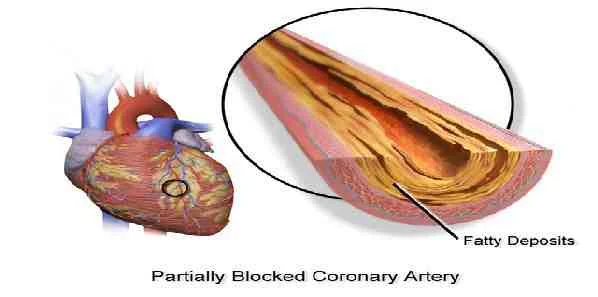The findings of a new U.S. study published in JAMA revealed that those diagnosed with nonobstructive coronary artery disease (CAD) had a remarkably increased risk of heart attack or death one year after diagnosis. The study evaluated heart attack and mortality rates amongst patients with nonobstructive CAD, obstructive CAD, and no apparent CAD.
Nonobstructive CAD is atherosclerotic plaque that would not be expected to obstruct blood flow or result in anginal symptoms such as chest pain. Despite the fact that such lesions occur in 10 percent to 25 percent of patients undergoing coronary angiography, their presence has been described as “insignificant” or “no significant CAD" in the medical literature. This perception of nonobstructive CAD may be incorrect, some experts argue, citing previous research which has noted that the majority of plaque ruptures and resultant heart attacks arise from nonobstructive plaques.
Despite the prevalence of nonobstructive CAD identified by coronary angiography, little is known about its risk of adverse outcomes, according to researchers led by Thomas M. Maddox, MD, MSc, of the VA Eastern Colorado Health Care System in Denver (CO, USA). To fill the gap in understanding such risks, the research team decided to investigate heart attack and death rates amongst patients with nonobstructive CAD, obstructive CAD, and no apparent CAD.
The 37,674 patients included in the study were all U.S. veterans who underwent elective coronary angiography for CAD between October 2007 and September 2012 in the Veterans Affairs health care system. Patients with previous CAD events were excluded. CAD extent was defined by degree of vessel narrowing and distribution (1, 2, or 3 vessel), the researchers explained.
Based on elective coronary angiography results during the study period, 22.3 percent of the patients had nonobstructive CAD and 55.4 percent had obstructive CAD. Key findings of the study include:
The results, according to the authors, are consistent with previous biologic studies indicating that a majority of MIs are related to nonobstructive stenosis or narrowing of an artery. They highlight the need to recognise that nonobstructive CAD is associated with significantly increased risk for MI, the authors explained.
"(The) results reveal the limitations of a dichotomous [divided into two parts] characterisation of angiographic CAD into ‘obstructive’ and ‘nonobstructive’ to predict MI and highlight the importance of preventive strategies such as pharmacotherapy treatments and lifestyle modifications to mitigate these risks,” Dr. Maddox's team said.
Source: JAMA
Image Credit: Wikimedia Commons
Nonobstructive CAD is atherosclerotic plaque that would not be expected to obstruct blood flow or result in anginal symptoms such as chest pain. Despite the fact that such lesions occur in 10 percent to 25 percent of patients undergoing coronary angiography, their presence has been described as “insignificant” or “no significant CAD" in the medical literature. This perception of nonobstructive CAD may be incorrect, some experts argue, citing previous research which has noted that the majority of plaque ruptures and resultant heart attacks arise from nonobstructive plaques.
Despite the prevalence of nonobstructive CAD identified by coronary angiography, little is known about its risk of adverse outcomes, according to researchers led by Thomas M. Maddox, MD, MSc, of the VA Eastern Colorado Health Care System in Denver (CO, USA). To fill the gap in understanding such risks, the research team decided to investigate heart attack and death rates amongst patients with nonobstructive CAD, obstructive CAD, and no apparent CAD.
The 37,674 patients included in the study were all U.S. veterans who underwent elective coronary angiography for CAD between October 2007 and September 2012 in the Veterans Affairs health care system. Patients with previous CAD events were excluded. CAD extent was defined by degree of vessel narrowing and distribution (1, 2, or 3 vessel), the researchers explained.
Based on elective coronary angiography results during the study period, 22.3 percent of the patients had nonobstructive CAD and 55.4 percent had obstructive CAD. Key findings of the study include:
- Within one year, 845 patients died and 385 were rehospitalised for myocardial infarction (MI; heart attack). The one-year MI risk progressively increased by the extent of CAD, rather than abruptly increasing between nonobstructive and obstructive CAD, the researchers noted.
- Patients with nonobstructive CAD had an associated risk of MI that was 2-to 4.5-fold greater than amongst those with no apparent CAD.
- Similar observations were seen with one-year mortality and the combined outcome of one-year MI and death.
The results, according to the authors, are consistent with previous biologic studies indicating that a majority of MIs are related to nonobstructive stenosis or narrowing of an artery. They highlight the need to recognise that nonobstructive CAD is associated with significantly increased risk for MI, the authors explained.
"(The) results reveal the limitations of a dichotomous [divided into two parts] characterisation of angiographic CAD into ‘obstructive’ and ‘nonobstructive’ to predict MI and highlight the importance of preventive strategies such as pharmacotherapy treatments and lifestyle modifications to mitigate these risks,” Dr. Maddox's team said.
Source: JAMA
Image Credit: Wikimedia Commons
Latest Articles
Angiography, heart attack, plaques, CAD, coronary artery disease
The findings of a new U.S. study published in JAMA revealed that those diagnosed with nonobstructive coronary artery disease (CAD) had a remarkably increas...










